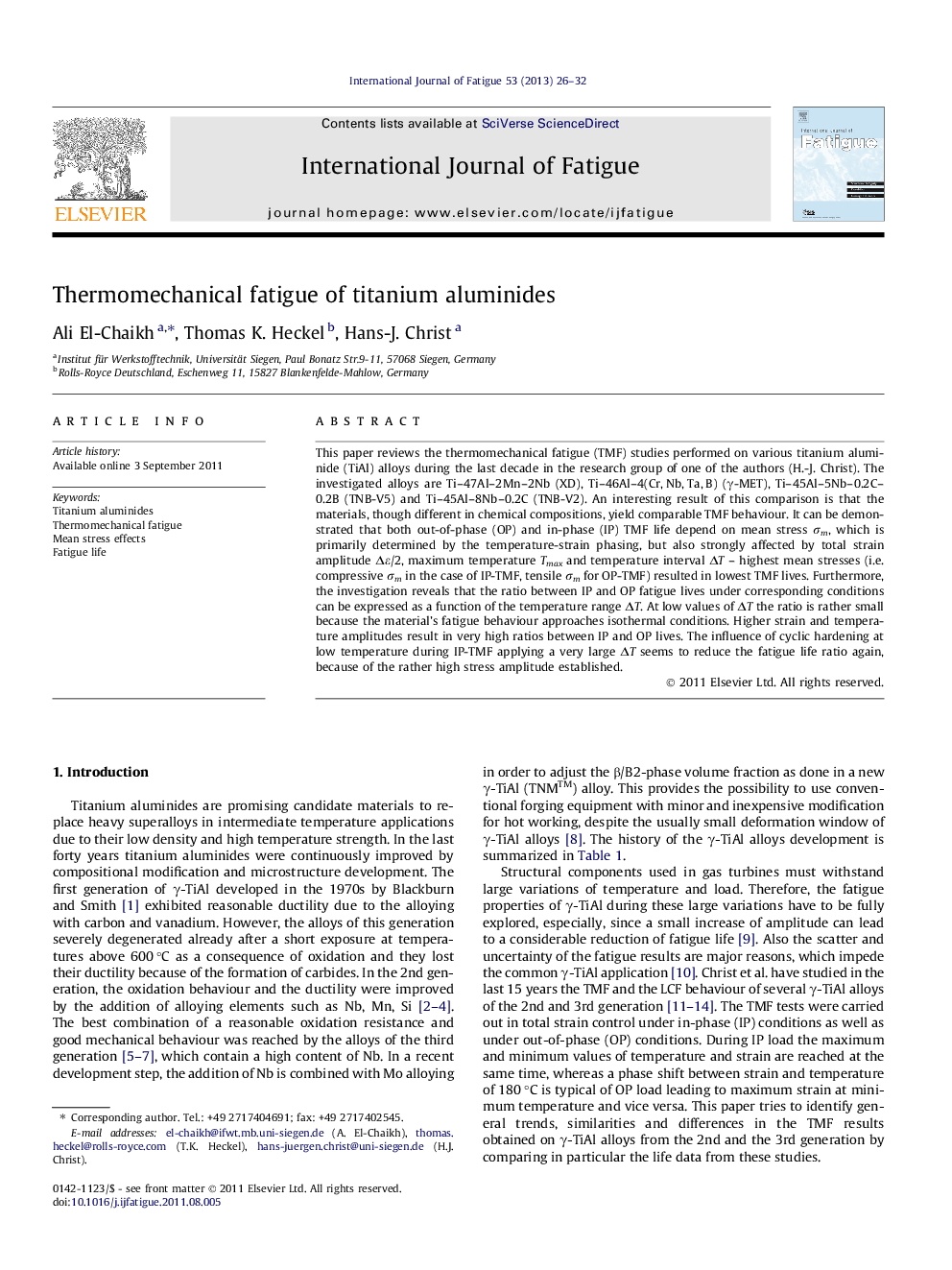| Article ID | Journal | Published Year | Pages | File Type |
|---|---|---|---|---|
| 777675 | International Journal of Fatigue | 2013 | 7 Pages |
This paper reviews the thermomechanical fatigue (TMF) studies performed on various titanium aluminide (TiAl) alloys during the last decade in the research group of one of the authors (H.-J. Christ). The investigated alloys are Ti–47Al–2Mn–2Nb (XD), Ti–46Al–4(Cr, Nb, Ta, B) (γ-MET), Ti–45Al–5Nb–0.2C–0.2B (TNB-V5) and Ti–45Al–8Nb–0.2C (TNB-V2). An interesting result of this comparison is that the materials, though different in chemical compositions, yield comparable TMF behaviour. It can be demonstrated that both out-of-phase (OP) and in-phase (IP) TMF life depend on mean stress σm, which is primarily determined by the temperature-strain phasing, but also strongly affected by total strain amplitude Δε/2, maximum temperature Tmax and temperature interval ΔT – highest mean stresses (i.e. compressive σm in the case of IP-TMF, tensile σm for OP-TMF) resulted in lowest TMF lives. Furthermore, the investigation reveals that the ratio between IP and OP fatigue lives under corresponding conditions can be expressed as a function of the temperature range ΔT. At low values of ΔT the ratio is rather small because the material’s fatigue behaviour approaches isothermal conditions. Higher strain and temperature amplitudes result in very high ratios between IP and OP lives. The influence of cyclic hardening at low temperature during IP-TMF applying a very large ΔT seems to reduce the fatigue life ratio again, because of the rather high stress amplitude established.
► In this study we give a review of TMF-experiments performed on various TiAl-alloys. ► All alloys are extremely susceptible to out-of-phase TMF loading. ► TMF lives under IP loading were higher than under corresponding LCF conditions. ► Stable crack propagation is only observed in IP TMF tests.
